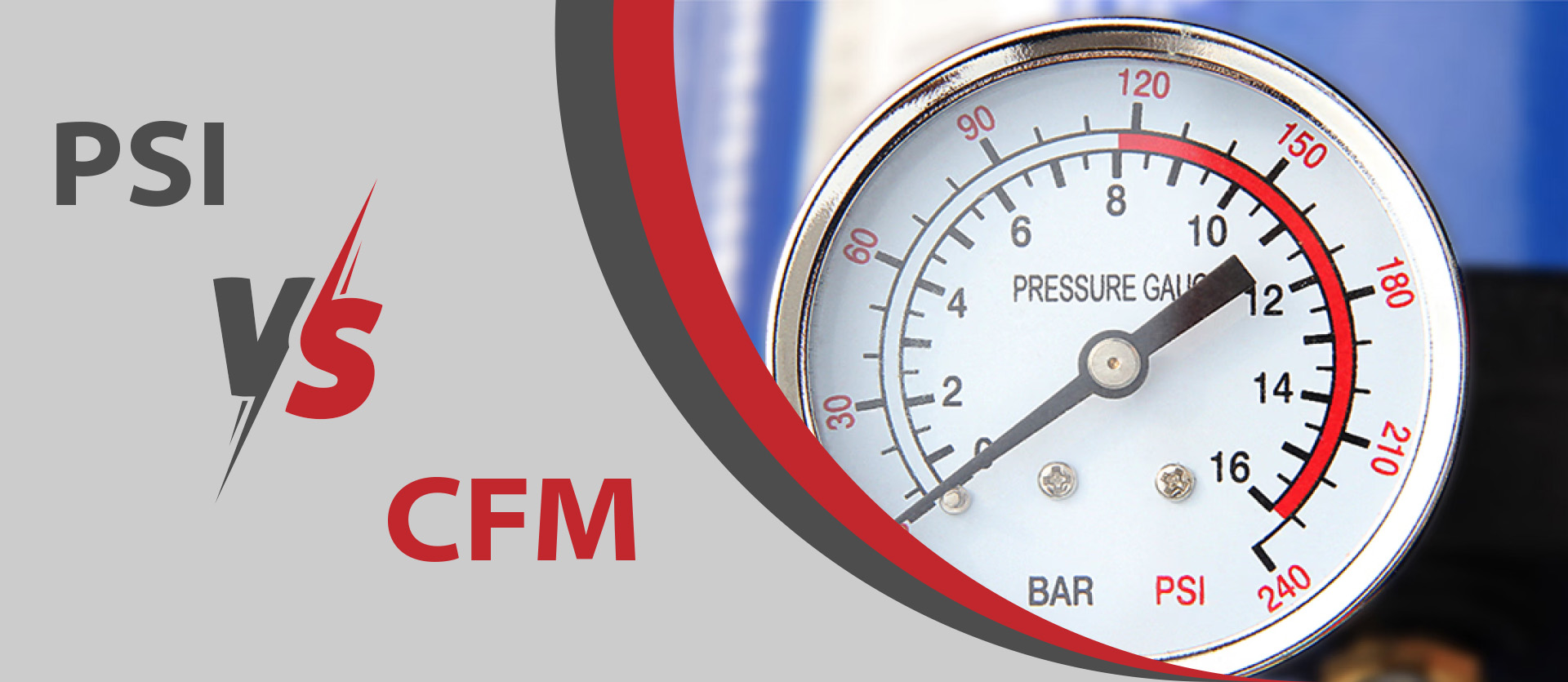What Is the Difference Between PSI and CFM?
2 June 2025, Monday

PSI and CFM are commonly confused measurement units essential to air compressors and pneumatic tools. Although both are units of measurement, they represent different aspects. PSI (Pounds per Square Inch) measures the pressure within a given area, while CFM (Cubic Feet per Minute) indicates the volume of air flowing per minute. Understanding the difference between these two values is crucial when purchasing a compressor or operating air-powered tools. Misinterpretation may lead to poor performance or even equipment damage.
What Does PSI Mean?
PSI stands for “Pounds per Square Inch” and is widely used in industrial applications, the automotive sector, and everyday devices to express pressure.
It measures the amount of force (in pounds) applied to one square inch of surface area. PSI is a common indicator of pressure in systems like tire inflation, water pipes, or air compressors. The power of the air is directly related to the pressure delivered. For example, an air compressor rated at 100 PSI means it delivers 100 pounds of pressure per square inch.
What Does CFM Mean?
CFM stands for “Cubic Feet per Minute,” and it measures the volume of air that flows in one minute. It is a crucial metric in systems like ventilation, air compressors, and cooling devices. In the context of air compressors, CFM indicates how much air the compressor can move per minute. This value is essential in evaluating the compressor's performance and selecting the appropriate equipment. For example, a compressor with a 30 CFM capacity delivers 30 cubic feet of air per minute. Knowing the required CFM helps you choose the right compressor for your needs, ensuring efficiency and avoiding performance issues.
The Relationship Between Pressure (PSI) and Flow (CFM)
For compressed air systems to function effectively, a sufficient flow rate (CFM) must be delivered at the required pressure level (PSI) according to application needs. Therefore, engineers designing or operating air systems must understand the physical relationship between CFM and PSI.
This relationship can be explained by the formula:
P₁ × V₁ = P₂ × V₂
Where:
- P₁: Initial pressure
- V₁: Initial volume
- P₂: Final pressure
- V₂: Final volume
Under constant temperature, this equation shows that the volume and pressure of an ideal gas are inversely proportional. As pressure increases, volume decreases, which affects the airflow rate.
Here’s an example calculation based on the Best Practices for Compressed Air guidelines, which assumes an average of 4.5 CFM produced per 1 horsepower (HP).
Scenario:
- Current system: 25 HP compressor → 100 PSI produces 100 CFM
- Application site: Can only maintain 80 PSI
- Goal: Determine how much extra HP is needed to maintain 100 PSI at the application site
Calculation:
- Required new CFM:
100 CFM × (100 PSI / 80 PSI) = 125 CFM
- Additional flow needed:
125 CFM- 100 CFM = 25 CFM
- Required additional horsepower:
25 CFM / 4.5 CFM per HP ≈ 5.56 HP
In this case, about a 7.5 HP compressor should be added to maintain the desired pressure.
Choosing the Right Air Compressor
Now that you understand the difference between PSI and CFM, it’s important to be careful when selecting an air compressor. Choosing the right compressor ensures efficient operation of your pneumatic tools. The simplest way is to check the air requirements (PSI and CFM) of your tools and confirm that the selected compressor meets these specifications.
Every tool has unique pressure and airflow demands, so knowing these values in advance is crucial. When selecting a compressor, consider factors such as tank size, motor power, and duty cycle.
Özen Kompresör is a professional company ready to assist you in this process. By consulting with experts, you can find the most suitable compressor for your project, helping prevent downtime and unnecessary costs.
You Might Also Like: Which Auxiliary Equipment Do You Need When Buying a Compressor?
